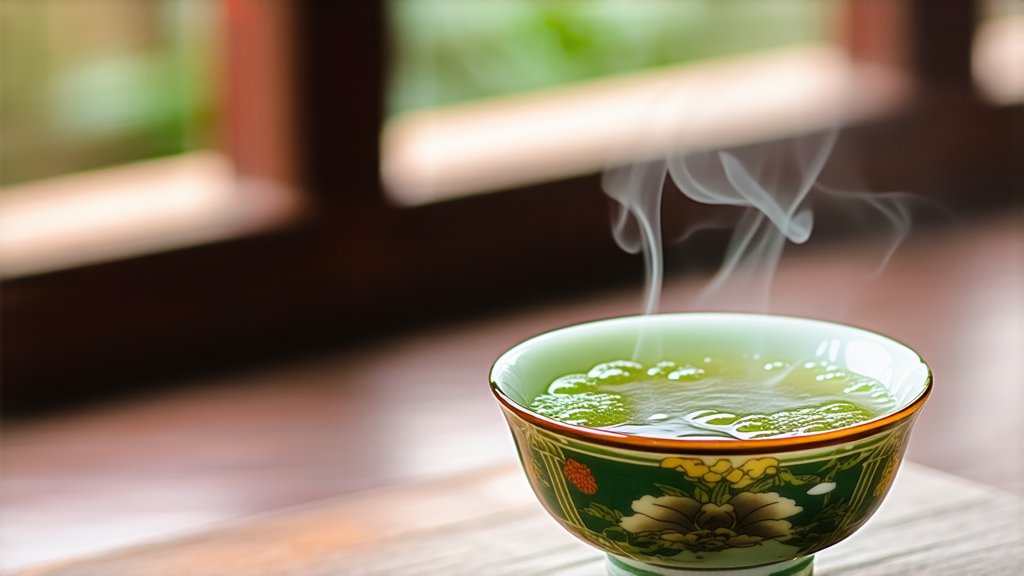
China's rich tea culture is renowned worldwide for its diversity and depth, and among its many exquisite offerings, Tieguanyin stands out as a quintessential representation of the country's tea artistry. This article delves into the historical roots, varieties, intricate manufacturing process, and the nuanced art of appreciating Tieguanyin, one of the most celebrated varieties within the Chinese oolong tea category.
Historical Background
Tieguanyin, often referred to as the "Iron Goddess of Mercy," traces its origins back to the Ming Dynasty (1368-1644). Legend has it that the tea was discovered by a poor scholar named Wei Yin who stumbled upon a wild tea plant while studying in the Anxi region of Fujian Province. He cultivated the plant and found that its leaves produced an exceptionally fragrant and flavorful tea. The name "Tieguanyin" translates to "Iron Buddha" or "Iron Mermaid," symbolizing both its strong character and the compassionate nature associated with Guanyin, the Goddess of Mercy.
Varieties of Tieguanyin
While Tieguanyin is primarily grown in Anxi County, there are several sub-varieties that have developed over time, each with unique characteristics. The two most notable types are Xiangxing (aromatic type) and Rouxing (toasted type).
-
Xiangxian Tieguanyin: This variety emphasizes floral and fruity aromas, often described as having notes of orchids, osmanthus, or honey. It undergoes minimal roasting, allowing its natural fragrance to shine through.
-
Rouxing Tieguanyin: Known for its deep, roasted flavors, this variety undergoes a more extensive roasting process. The result is a tea with rich, earthy undertones and a smoother texture.
Manufacturing Process
The production of Tieguanyin is an art form that combines traditional methods with meticulous attention to detail. Here's a step-by-step overview of the process:
-
Plucking: Only the top two or three leaves and a bud are picked from mature tea plants, usually during the spring and autumn harvests when the leaves are at their prime.
-
Withering: Freshly plucked leaves are spread out in thin layers to wilt under the sun for several hours. This step reduces moisture content and prepares the leaves for subsequent processes.
-
Bruising: The withered leaves are then tossed in bamboo baskets to bruise the edges slightly. This helps release enzymes that will aid in the oxidation process.
-
Fixation: The bruised leaves are quickly pan-fired in woks to halt oxidation. This step also develops the distinctive green color and fresh aroma of the tea.
-
Rolling: The fixed leaves are rolled into tight balls using specialized rolling machines. This step helps extract juices and further shape the leaves.
-
Oxidation: The rolled leaves are left to oxidize partially, which contributes to the unique flavor profile of Tieguanyin. The degree of oxidation can vary depending on whether the tea is being made into the Xiangxing or Rouxing variety.
-
Roasting: For Rouxing Tieguanyin, the leaves undergo multiple rounds of roasting to develop their characteristic roasted flavors. Each round of roasting is followed by cooling and turning the leaves to ensure even roasting.
-
Final Drying: The tea is dried one last time to reduce moisture content to about 5%, ensuring long shelf life and stability.
-
Sorting and Packaging: Finally, the dried tea is sorted by quality and size, then packaged for distribution.
Appreciating Tieguanyin: The Tea Ceremony
Drinking Tieguanyin is not just about consuming a beverage; it's an experience steeped in tradition and mindfulness. Here's how you can conduct a simple yet authentic Tieguanyin tea ceremony:
-
Preparation: Use a Gaiwan (a traditional Chinese teapot with a lid and spout) or a Yixing clay teapot, preferably made of purple clay. Rinse the pot with boiling water to warm it up.
-
Measurement: Take about 5 grams of loose leaf Tieguanyin per 100 ml of water. Place the leaves into the pot.
-
First Infusion: Pour hot water (around 90°C/194°F) over the leaves and immediately pour it out to rinse the leaves. This step removes any impurities and "awakens" the tea.
-
Steeping: Refill the pot with hot water and let the tea steep for about 20-30 seconds for the first infusion. Subsequent infusions can be longer, typically adding 10 seconds with each brew.
-
Pouring and Sipping: Pour the brewed tea into small cups, filling them halfway to allow room for aroma appreciation. Take a moment to inhale the delicate fragrance before taking slow, deliberate sips to fully appreciate the complex flavors and aftertaste.
-
Multiple Infusions: Tieguanyin is known for its ability to be re-steeped multiple times, with each infusion revealing different layers of flavor. Enjoy up to seven infusions if possible.
Conclusion
Tieguanyin is more than just a tea; it's a cultural icon that encapsulates centuries of Chinese history and tradition. From its mythical origins to its meticulous manufacturing process and the meditative act of savoring it, the tea offers a profound connection to both nature and heritage. Whether you're a seasoned tea connoisseur or a curious newcomer, understanding and appreciating Tieguanyin enriches not only your palate but also your soul.